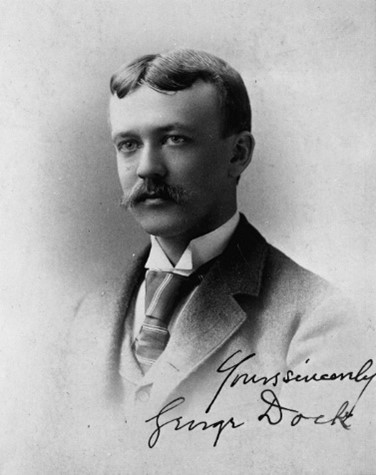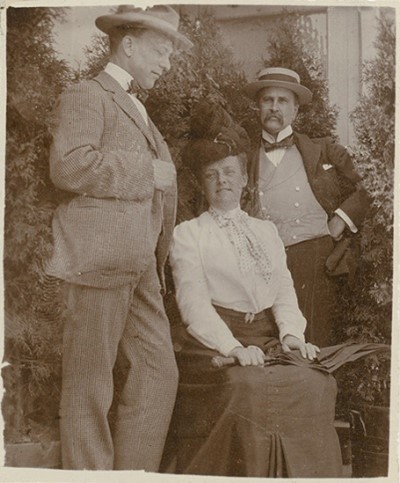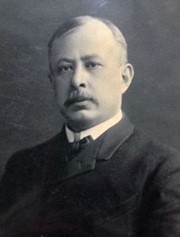
Texas has always had a strong connection with the American Osler Society; as it was co-founded in 1970 by John. P. McGovern, MD (1921-2007). The UTMB’s historical connections with Sir William Osler are less well documented. Here we hope to
shed light on the little-known genealogical, archival and museological connections between Sir William Osler and Galveston, Texas.
In 1884, Osler left Montreal for Philadelphia, where he was appointed professor of clinical medicine at the University of Pennsylvania. While at Penn, he continued his clinical investigations, spending many hours in the postmortem rooms performing autopsies.
He maintained his earlier emphasis on superior patient care, conducting famous ward walks in Old Blockley, a unit of Philadelphia Hospital. Osler’s tenure at Penn was brief. After only four years, he moved to Baltimore in the fall of 1888
and became the physician-in-chief of the recently organized Johns Hopkins Hospital.
During the early 1880s George Dock, MD (1860-1951) studied medicine under Osler at Penn, beginning what Marilyn Miller Baker described in her book titled, The History of Pathology in Texas (1996) as a “genealogical
tradition” that would link the master and his students across Texas. Dock served as a pathologist at the Texas Medical College and Hospital from 1888 to 1891.
 The George Dock Scholar Fund was established by the Board of Regents of The University of Texas System on June 10, 1993.
The purpose of the fund is two-fold:
The George Dock Scholar Fund was established by the Board of Regents of The University of Texas System on June 10, 1993.
The purpose of the fund is two-fold:
1. To broaden and strengthen the field of pathology by supporting graduate students, residents, and fellows,
2. To provide recognition for young pathologists who have distinguished themselves by the quality of their instruction and service to students.
Former UTMB President, Dr. Truman Blocker, Jr., in his book about the first 75 years of history for the UTMB, referred to George Dock as “another example of the caliber of the Texas Medical College Faculty.” It was the precursor program
from which UTMB emerged in 1891. George Dock combined a serious interest in Internal Medicine with his work in Pathology. In fact, Dr. Chauncey D. Leake referred to him as “probably the first qualified internist in Texas.”
A recent archival find, housed in the Truman G. Blocker, Jr. History of Medicine Collections, Moody Medical Library at the UTMB, has established a second connection with Osler. Allen J. Smith, MD (1863-1926) also studied under Osler at Penn. Osler examined
and graded Smith’s Medical News Prize-winning essay titled: A Mycological Method for the Recognition and Approximate Quantitative Estimation of Sewage Contamination in Water, with a description of a New Species of Chromogenic Bacillus
(1886).

Dr. Smith had already discovered the Bacillus coeruleus (pseudomonas smithii) and had won the Medical News prize and other anatomical prizes when he arrived in Galveston in September of 1891 with his wife and two-year-old son. He was appointed to one
of 8 faculty positions at the newly organized Medical Department. The first professor of all subjects taught with a microscope - histology, embryology, bacteriology, parasitology, microscopic pharmacology, as well as tropical medicine, nervous and
mental diseases, inorganic chemistry, and clinical pathology - was twenty-seven years old. He lectured for a time on medical jurisprudence and was dean on two different occasions. In 1902, he published a textbook titled, Lessons and Laboratory Exercises
in Bacteriology. Dr. Smith and Dr. William Gammon, a member of the second graduating class at UTMB in 1893, constituted the faculty of the Department of Pathology during the early years. In 1903 Dr. Smith left Galveston and returned to Pennsylvania
to become a professor of pathology at the University of Pennsylvania.